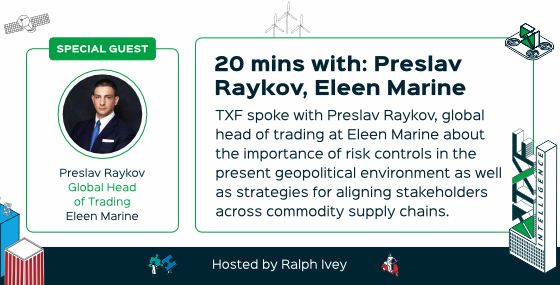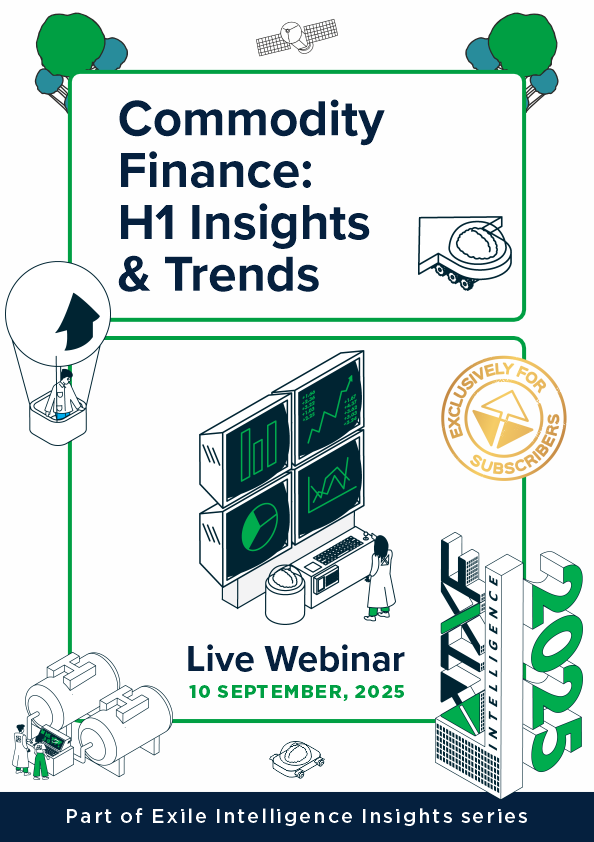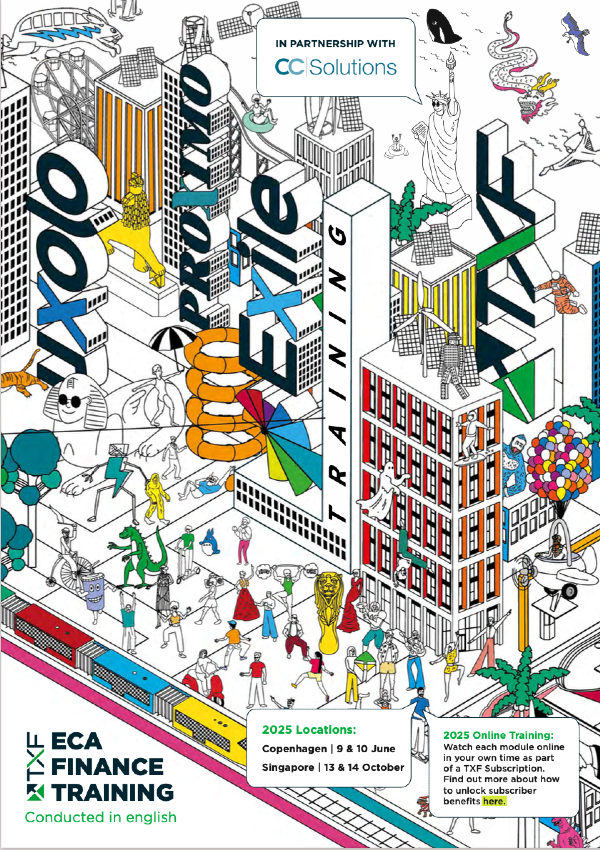ADB's bid to standardise Suspicious Activity Reports in trade finance
TXF spoke with Steven Beck, head of trade and supply chain finance at the Asian Development Bank (ADB), to find out more about the development bank’s year-on-year growth in supported trade, as well as its latest initiative to create a standardised approach to the reporting of Suspicious Activity Reports (SARs) by banks to regulators.

TXF: What has the ADB has been up to in terms of trade recently?
Steven Beck (SB): You may recall that the trade business really has scaled so we grew, depending on the measure, between 35% and 40%, in 2017 and then we grew by the same amount last year. Last year we did 4500 transactions supporting US$6.2 billion in trade and of the 21 countries we're active in, the most active are Bangladesh, Vietnam, Sri Lanka and Pakistan. We don't assume risk in the relatively easy markets like China, India, Thailand and Malaysia, at least not in the trade business.
TXF: What sort of trade instruments have you've been using?
SB: We provide guarantees and loans to banks and the vast majority of our portfolio, over 90% percent, is on guarantees and it's all covering FI [Financial Institution] risk. So, vanilla trade finance. I wanted to mention that after all that growth those two years of a lot of growth, the first quarter [this year] has been pretty flat, which is interesting. One can't grow indefinitely at those kinds of rates. [Beck subsequently notes that while the first two months of 2019 were flat, March was very busy and the ADB trade was up 10% over the same quarter in 2018]
TXF: When we talked last year it was very much that you were ascribing a certain amount of that rate of growth to the de-risking problem that had happened with the correspondent relationships of banks. Do you think that's plateaued out now?
SB: No. Well apparently the statistics suggest that de-risking is continuing. It may have decelerated a little bit because of a lot of relationships have already been severed but it continues unabated. You may recall that we do this study to quantify what the market gaps are in trade finance. The last one we put out was in 2017 which suggested a global gap of $1.5 trillion.
TXF: From $1.6 trillion the year before. And you've had a two year gap.
SB: Exactly and we're going to be putting out a new one later on this year, probably in September. So it'll be interesting to see what that figure is. But when we ask people what's the primary reason for the gap and what are the impediments to financial institutions closing those gaps, consistently we hear that it's around the AML/CFT [Anti Money Laundering/Counter Financing of Terrorism] measures that have been put in place. And as you know, what financial institutions are finding is that complying with those requirements, while it's important, have unintended consequences because it is so onerous to conduct that due diligence and because in many cases it's very difficult to do it on SMEs, and costly, naturally financial institutions frankly don't bother with a lot of smaller transactions for SMEs and in emerging markets. So we've launched a major initiative to try to tackle some of these persistent problems in AML/CFT. We got some regulators and some banks together in Singapore a couple of weeks ago to try to address persistent problems, namely price validation, non customer due diligence, KYC, over compliance by banks.
TXF: Over compliance?
SB: Those are cases where you know the regulator doesn't necessarily want us to impose certain requirements on a bank but the bank's compliance department or legal department feels that they should be going an extra step just to be super cautious to mitigate the risk of some multi-billion dollar fine. But due to a lack of communication and clarity we are seeing some banks over complying. And so there are instances of derisking. And activities that are contributing to the gap that aren't necessary.
TXF: What were the results of the meeting?
SB: Well they were very concrete. The idea of the meeting was not just to chat about it but to figure out exactly what it is that we wanted to do. One of the outcomes is that we want to try to standardise the reporting of suspicious activities transactions, they're called SARs, suspicious activity reports. These are reports that banks have to submit to regulators on a monthly basis. And what we understand is that banks are putting a great deal of resources into collecting information to provide these reports and that the results of the reports, meaning prosecutions and putting bad guys in jail and confiscating land and property and money and so on, is negligible.
The question is are the banks using vast amounts of resources to collect this information which again does have negative consequences on SMEs and others, with questionable results in terms of catching bad guys. What we're hoping is that if we can get the regulatory and banking communities together to agree on a more standardised template that a) it will make it easier and cheaper and less onerous to provide these reports and b) hopefully we're going to be able to start to see which of those elements of the SARs are really providing prosecutors with the information they need to put bad guys in jail or confiscate ill-gotten gains.
TXF: Which regulators are we talking about?
SB: We had the Financial Stability Board there, MAS, HKMA, Australian Transaction Reports and Analysis Centre (AUSTRAC). We had regulators from Bangladesh and Thailand there as well along with BAFT, ICC, Wolfsberg Group, Egmont Group [and a number of major] groups.
TXF: What's the timeline for developing something on this?
SB: We're aiming certainly for the end of this year to have something together. That's one exciting thing that we're working on. Then the other one is to develop a feedback loop for the reports. After the banks submit the reports and I think even a lot of the regulators after they submit to prosecutors don't know what the result is. They don't know what's happened with these reports. The thinking is if we can if we can create a feedback loop from the prosecutors to the regulators to some kind of a supranational regulator then perhaps something could be published at least on an annual basis. That in aggregate would give people a sense of how actionable and useful the specific elements to the report are. [Then] we can start honing finite resources onto what's really material and making a difference.
TXF: Does this feed back at all into the trade as an asset class discussions?
SB: It wouldn't be credit related but I was at a FATF plenary earlier this year and I can tell you that a lot of regulators are wanting to have a closer look at the role that trade based money laundering is playing in the global economy. I think in terms of an asset class, yes it may be helpful in terms of understanding what role trade based money laundering is playing in crime and terrorism. It would be helpful but not on the credit side but more on the AML/KYC side, which is a risk, not a credit risk but it's a risk. So, yes, I think that's an interesting way of thinking.
TXF: So they're all of a piece with the data you're producing on the trade finance gap itself and how to encourage SMEs to bring deals to market how to encourage banks to bank those SME deals in order to get them to market?
SB: I'm glad you mentioned that. It's an interesting way of thinking about it because you know that we've created the trade finance register. The default statistics on trade finance and that continues to be helpful in terms of understanding trade finance as an asset class. Maybe this is a good way of thinking about that.
TXF: Because it's certainly an excuse that the banks use not to finance trade.
SB: That's a very good point. That's the second thing that also we hope to have done before the end of this year. And then on the non customer due diligence. We want to promote the legal entity identifier (LEI) and ratchet it up a notch.
TXF: Where is that at now? I see GLEI around and about. Is it gaining traction within our sector?
SB: It is gaining traction but not at the clip that is needed for it to make a material difference in closing gaps. We'd really like a combination of things to happen. Either the G20 to legislate a requirement for all importing and exporting companies to have an LEI. And/or the banking community to say 'look I'm sorry you can't be a client of ours unless you have an LEI'. Later on this month we're going to publish a survey that we did of companies to understand how easy or difficult is it to get one of these LEIs and how much it costs. The focus of our study was emerging markets. Often when you say to people 'we should legislate a requirement' they say 'well can SMEs get it in Cambodia/Fiji and places like that?' Frankly we didn't really know the answer to that.
That's why we did the survey and the survey basically says 'yes'. SMEs in Cambodia and Bangladesh and Samoa can acquire an LEI. It's not a total pain. It's done within a reasonable period of time and it doesn't cost an arm and a leg. In fact 66% of the respondents said it costs $75 or less to get the initial number and then on an annual basis it's considerably less. We're releasing that later on this month and hopefully that's going to help the debate around driving global adoption. But the thing that we want to do and we discuss doing out of Singapore with the group was coming up with a clearer more cohesive marketing strategy to better explain the benefits to SMEs and other companies of acquiring one of these numbers. I think the marketing has been a bit lacking.
TXF: How are you developing the actual quality of the banking industry in Asia?
SB: Well we do provide a lot of training and technical assistance to banks in our developing member countries. We do that on trade finance, supply chain finance, risk management on sustainable trade.
And now we're going to be launching a fair bit of training on anti-money laundering and CFT because that's also a big part of the problem is that there isn't a sufficient confidence that banks in some of these countries have the know-how to really conduct a proper KYC and proper due diligence on the clients that they're onboarding. That's part of it.
TXF: Well one last question on a more global level two years ago when we were in Indonesia at the ICC we were witnessing the early stages of trade wars in general and the whole trade weaponisation and trade as becoming a much more political hot potato. Have you seen these things panning out? Do you think there's more information or are people more scared of trade?
SB: Yes, it's been interesting to see this play out and of course it continues to play out. I think the longer that it plays out the more of a drag it is on sentiment. And that that sort of drag means that the people are less inclined to make investments in other countries which leads to trade. And of course it makes people nervous and it represents a drag on growth. So it's clearly not a good thing. And the longer it persists, the more impact it has. The IMF and certainly the ADB's development outlook which was released last week indicates that sentiment around around trade is having a drag on global growth.
On the positive side there are some advantages in in Asia in that it's encouraging more focus on intra-Asian trade. If you look at the FDI [foreign direct investment] within Asia it's actually up over last year. And that is going to lead to more trade and underpin the trend that we've seen over the past decade for intra-Asian trade to play a more and more prominent role in global trade. It's 15% of global trade and it continues to increase. The trade tensions aren't good and longer they persist the more damage it's going to have but Asia remains resilient. And I think that is going to continue to grow.





